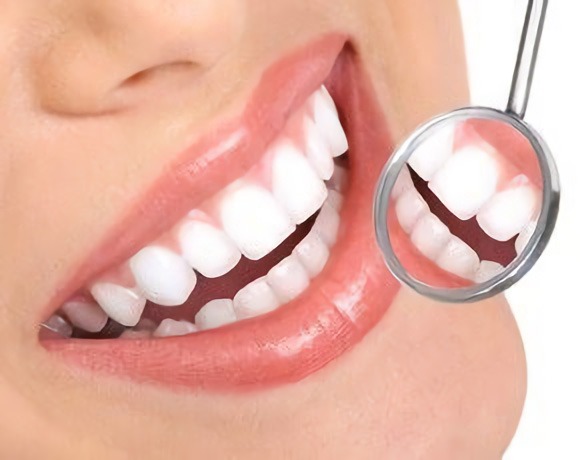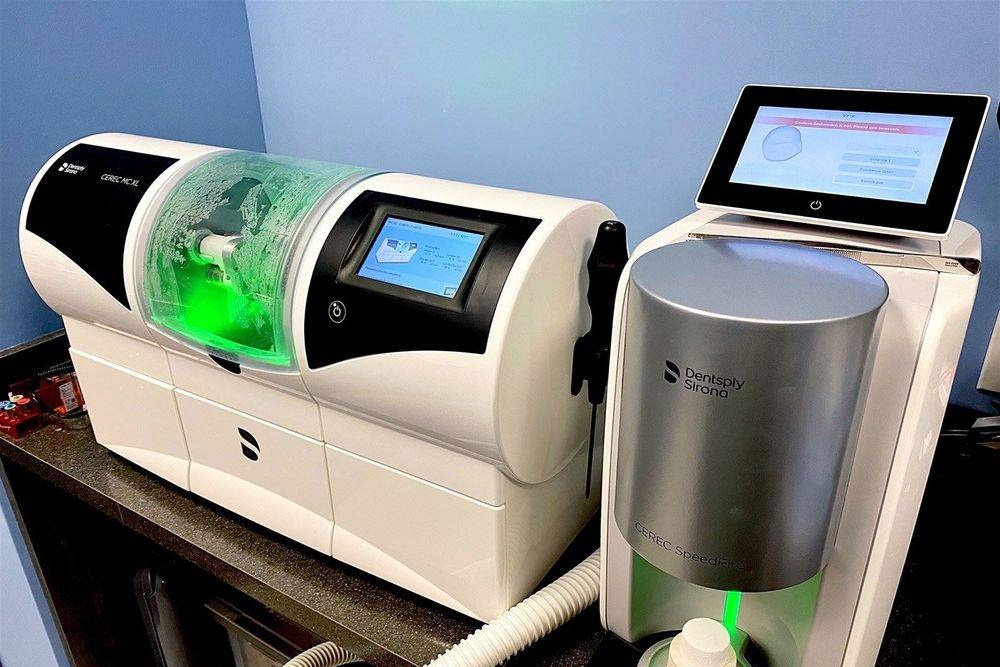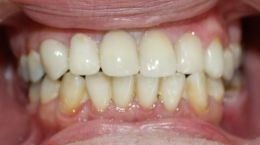Same-Day Crowns

Cerec Same-Day Crowns
A revolutionary system called CEREC has made it possible to create strong porcelain restorations in one office visit. With traditional crowns and all porcelain fillings patients had to attend one visit for tooth preparation, an impression for the lab, and a temporary crown or filling.
Two weeks later, the permanent crown or filling is placed at the second office visit. Besides the inconvenience of two office visits, patients may have problems with the temporary crown or filling falling out or breaking. With CEREC, we can design and mill an aesthetic, custom, and permanent crown or filling, and place it, in just one visit.
CEREC uses CAD/CAM technology incorporating a camera, computer and milling machine in one instrument. Dr. Rae uses a special camera to take an accurate picture of the damaged tooth.
This optical impression is transferred and displayed on a color computer screen, where the dentist uses computer aided design technology to design the restoration. Then computer aided manufacturing automatically creates the restoration to the surface of the old tooth. The entire process only takes about one hour!

CEREC
Restorations using CAD/CAM technology
E-Max
E-max ceramics allows for placement of posterior ceramic crowns that support the increased demands of bite forces in the posterior, even for people that grind their teeth. Ivoclar Vivadent’s patented lithium disilicate material is truly a revolution for the dental industry. Never before has a material been able to combine high strength, high esthetics and ease of use into one product, until now.
IPS e.max is a lithium disilicate glass ceramic that has optimized translucency, durability and strength for full anatomical restorations. Due to the use of new technologies and optimized processing parameters, IPS e.max lithium disilicate has evolved beyond previously available lithium disilicate ceramics.
IPS e.max lithium disilicate restorations exhibit superior durability featuring 360-400 MPa of flexural strength, about four times that of regular porcelain. When fabricated to full-contour, the monolithic structure is the most robust ceramic system tested to date. The opalescence, translucency and light diffusion properties of IPS e.max lithium disilicate were all designed to replicate natural tooth structure for beauty and undetectable restorations.
Flexural strength values largely depend on the methods used to measure them. This chart provides an overview of the flexural strength values measured with different methods.
Biocompatibility is regarded as a material’s quality of being compatible with the biological environment, i.e. the material’s ability to interact with living tissues by causing no, or very little biological reactions. A dental material is considered to be “biocompatible“ if its properties and function match the biological environment of the body and do not cause any unwanted reactions.
CEREC RESTORATIONS
. . .

Before:

After:
IPS e.max lithium disilicate is being used in multiple global clinical trials with up to 4 years worth of data. These studies show a mixture of both adhesively cemented and conventionally cemented restorations. Both groups of cementation types exhibit a 99% success rate.


